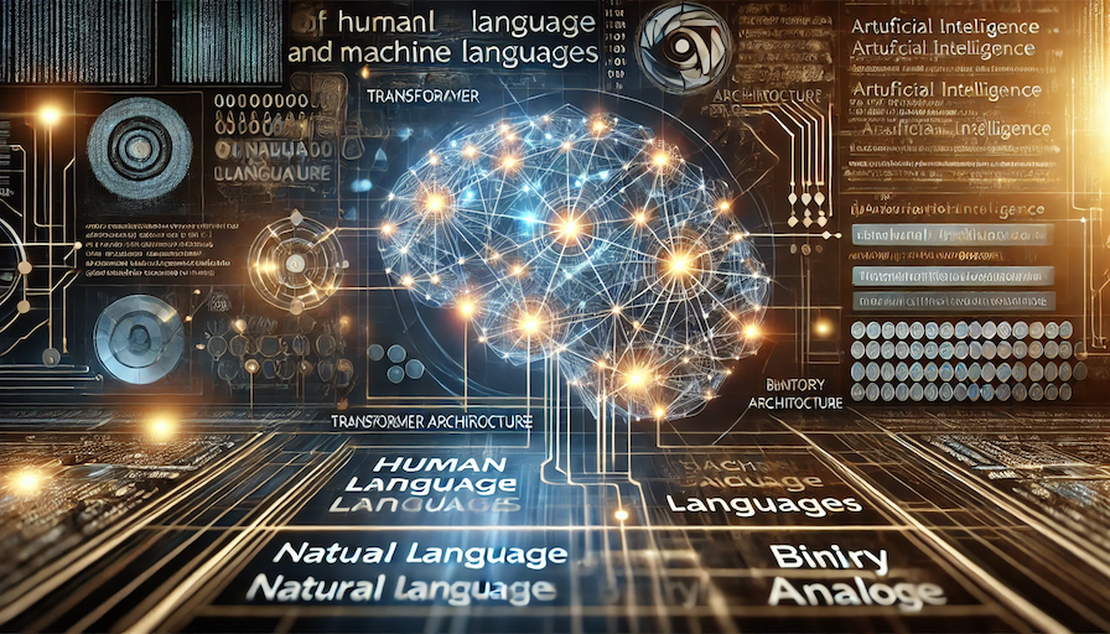Transformers as the Lingua Franca of AI: Revolutionizing Communication in the Machine Learning Era
In the rapidly evolving field of artificial intelligence, the ability for systems to communicate efficiently and process massive volumes of data has become paramount. Much like language allowed early humans to build complex societies and advance technology, certain architectures in machine learning are now serving as foundational tools to drive AI progress. One such architecture is the transformer.
For approximately 70,000 years, human evolution has been closely tied to advancements in language and cooperation. These abilities allowed us to share knowledge, organize, and innovate, enabling the development of civilizations and technological milestones. Similarly, modern AI systems rely on mechanisms for processing and sharing data. Unlike humans who communicate through spoken and written language, AI systems communicate through algorithms and encoded data.
One significant distinction is that humans are limited to natural languages, whereas machines can utilize both machine languages (binary or analog) and a variety of language models (small, medium, or large). This dual capability gives machines a distinct advantage in processing and exchanging information, as they can operate across diverse modalities with unparalleled efficiency and speed.
The emergence of transformers as a dominant architecture in AI mirrors this evolutionary leap in human communication. Transformers allow machines to process vast amounts of information with contextual awareness, enabling nuanced and efficient “dialogues” between AI systems.
Eniac and the Need for Von Neumann Architecture
The ENIAC (Electronic Numerical Integrator and Computer), built in the 1940s, was a monumental step forward in computing. However, it had significant limitations:
- Lack of a Stored Program: Programs had to be manually configured using physical switches and cables.
- Limited Scalability: Handling complex tasks was beyond its initial design.
To address these challenges, John von Neumann proposed an architecture that became the foundation for modern computers.
Contributions of Von Neumann
Von Neumann’s architecture introduced the concept of a stored-program computer, enabling:
- Reprogrammability: Switching tasks by loading a new program into memory.
- Universal Computation: Flexibility to solve diverse problems.
- Scalability and Efficiency: Standardizing memory, processing, and control.
Contributions of Alan Turing
While Von Neumann provided practical frameworks, Alan Turing offered foundational theoretical contributions:
- Turing Machine: Defined the limits of computation.
- Theoretical Universality: Inspired the design of universal computing systems.
- Cryptanalysis: Demonstrated computational power in real-world problem-solving.
Together, their work transitioned computing from niche mechanical processes to universal tools that shape society.
Evolution of Computer Languages: From Machine Code to LLMs
The journey of computer languages reflects humanity’s drive to make machines more accessible and powerful.
Machine Code and Assembly
Early programmers wrote in machine code, binary instructions directly understood by processors. This process was cumbersome and error-prone.
Assembly language introduced mnemonics (e.g., ADD) to simplify this, but it remained hardware-specific.
LISP: A Language for AI Pioneers
Among the earliest high-level programming languages, LISP (LISt Processing) stands out as a foundational tool for artificial intelligence. Created in 1958 by John McCarthy, LISP introduced groundbreaking concepts like recursion, garbage collection, and dynamic typing, which became essential in AI research.
LISP’s flexibility in manipulating symbolic data made it ideal for early AI applications, such as natural language processing and theorem proving. Its ability to represent code as data (and vice versa) allowed researchers to experiment with self-modifying programs, laying the groundwork for machine learning and other advanced techniques.
Though its popularity waned with the rise of newer languages, LISP’s influence persists in modern AI, as many of its concepts underpin contemporary programming paradigms and methodologies.
C Language - High Level, Portability, and Multiplatform
With languages like C, programming took a significant leap forward, bridging the gap between human-readable syntax and machine-level efficiency. Introduced in the early 1970s alongside the development of the Unix operating system, C emphasized portability, enabling programs to run across different hardware platforms with minimal modification.
C’s high-level constructs abstracted hardware-specific details while maintaining the performance advantages of low-level programming. Its close association with Unix not only solidified its status as a powerful systems programming language but also paved the way for the proliferation of Unix-based systems across the computing world.
This combination of portability, performance, and adaptability helped C become a foundational language for later programming languages, frameworks, and operating systems, influencing the evolution of software development and ensuring its relevance across platforms to this day.
Modern Languages and AI
Higher-level abstractions, such as Python, empowered the AI revolution. Today, large language models (LLMs) enable users to interact with machines through natural language, bridging human and machine understanding.
What Makes Transformers the “Language” of AI?
Transformers excel at handling sequential data with attention mechanisms that retain contextual relevance. Their design underpins tasks like text generation, translation, and summarization.
Beyond text, transformers are applied to vision, audio, and even reinforcement learning, making them a universal AI tool akin to a lingua franca—a shared standard for diverse applications.
Why Transformers Are More Than a Trend
Transformers represent a paradigm shift in AI:
- Context Awareness: Handle long sequences with nuanced understanding.
- Scalability: Process vast datasets and support large models.
- Adaptability: Versatile across fields, from NLP to protein folding.
Implications for the Future of AI
Transformers could standardize inter-agent communication in AI, enabling seamless collaboration across systems. This interconnected ecosystem may solve complex problems, much like human societies leverage shared language.
Final Thoughts: A Lingua Franca for the Digital Age
Just as language revolutionized human evolution, transformers are reshaping AI. They act as a universal framework for processing and sharing information, paving the way for unprecedented collaboration between machines and humans.
The rise of transformers signals a future where intelligent systems work as interconnectedly as the societies that created them—a true lingua franca for the digital age.
⚠️ Please take a look at the LLM Disclaimer
